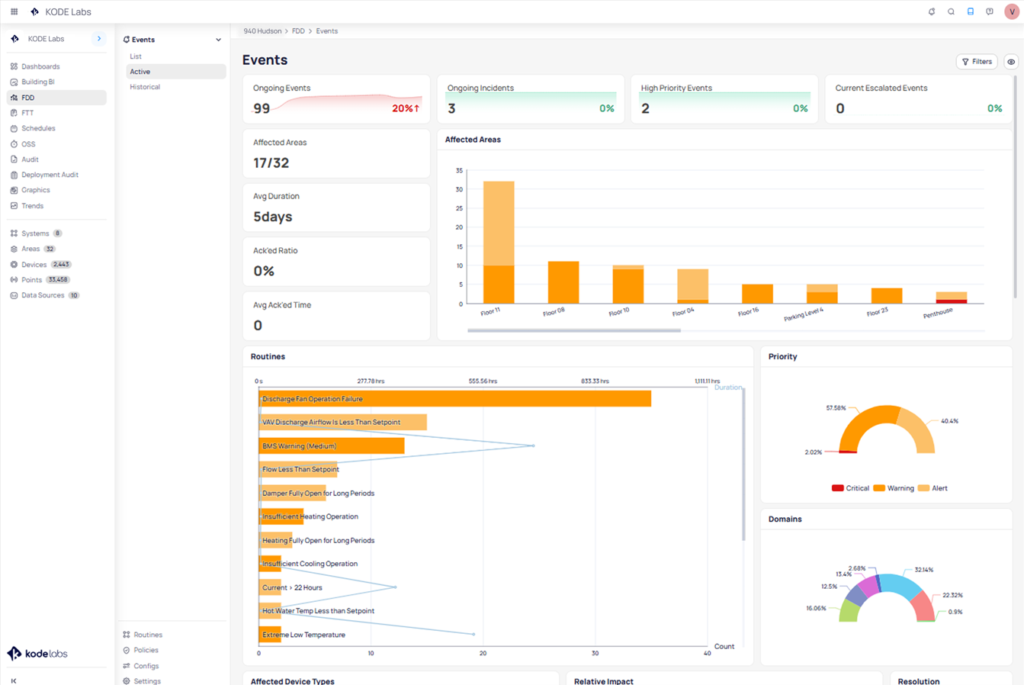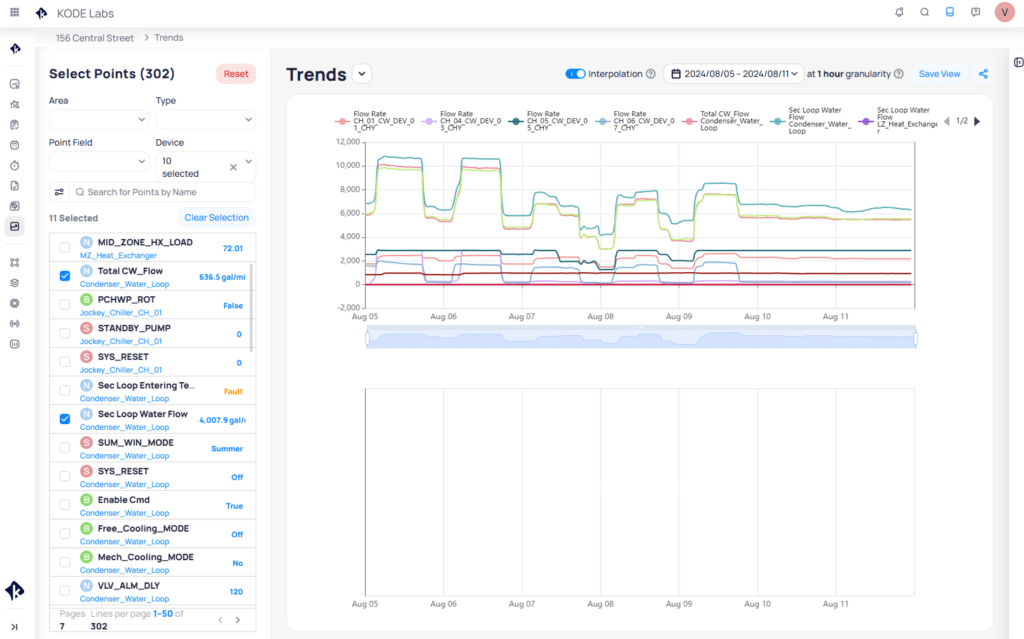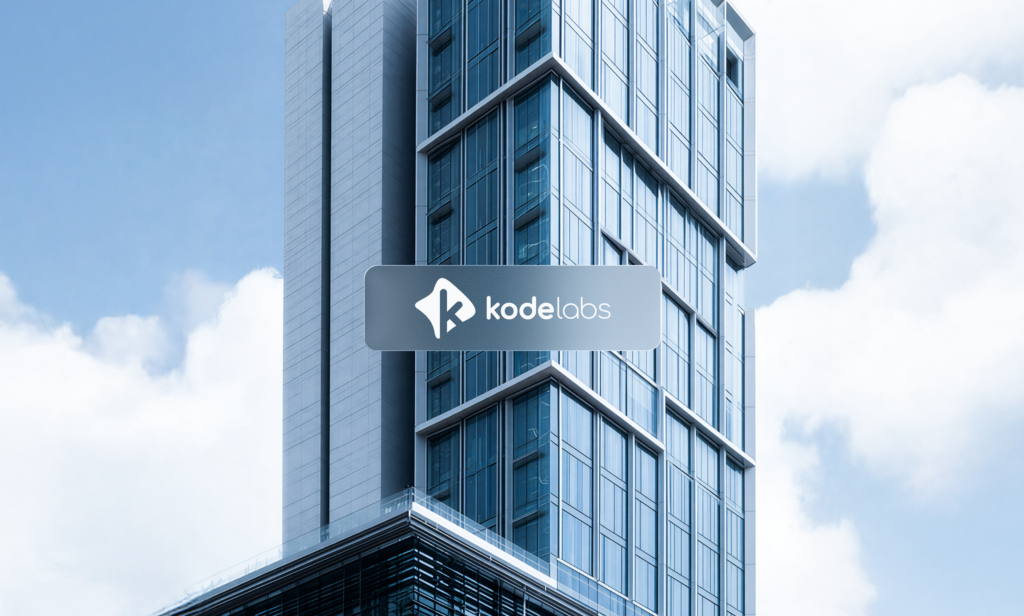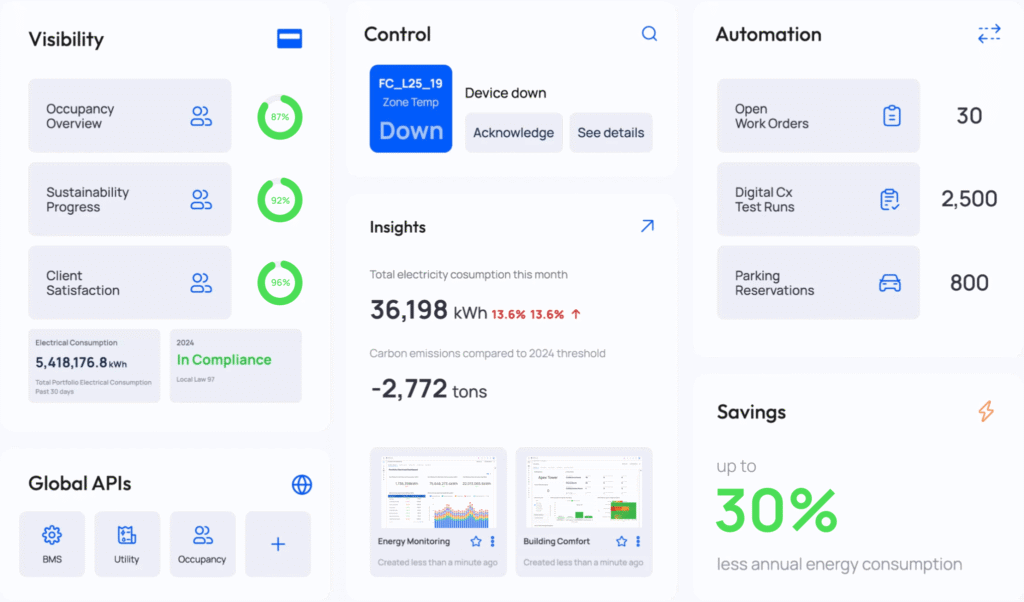On this page
Sign up to our newsletter
Subscribe to receive the latest blog posts to your inbox every week.
By subscribing you agree to with our Privacy Policy.
In real estate management, Engineering Managers are behind-the-scenes conductors ensuring building systems run as intended, while keeping tenants comfortable, vendors aligned, and energy performance on track.
But what does a typical day look like for an Engineering Manager? And how can the right technology help streamline the day-to-day balancing act?
In this article, we will walk through a day in their shoes, first exploring how responsibilities were handled traditionally, before we explore how these are now handled with a smart building operating system like KODE OS.
A day without KODE OS
8:00 AM – Juggling Manual Data and Constant Disruptions
A typical morning for an Engineering Manager starts early. The engineering team is out collecting data, often from equipment that isn’t connected to the Building Management System (BMS). These readings get manually entered into spreadsheets, which the Engineering Manager then reviews and compares with historical data. Once at their desk, the Engineering Manager’s time is split between putting out “fires” and anticipating them. That means reviewing spreadsheets, trend logs, and past reports to try and identify anomalies. If something looks off, like a sudden energy spike, they’ll need to log into separate systems, cross-check data, and dig into equipment logs to understand what’s happening. This process can take hours or even days.
11:00 AM – A Cold Complaint
A tenant reports no heat in their space during a day when temperatures are low. The Engineering Manager quickly realizes that an HVAC technician is needed to resolve the issue.
A truck roll is called for the mechanical vendor to diagnose the issue. The Engineering Manager needs to postpone their daily tasks to accommodate this disruption.
2:00 PM – Report Preparation & Checking Performance
Once the mechanical vendor addresses the issue with the VAV, the clock starts ticking. The Engineering Manager still needs to deliver reports to leadership by end of day, covering everything from energy usage and equipment performance to sustainability metrics and budget forecasts.
Hours are spent pulling data from disconnected platforms and manually updating spreadsheets, only to discover that utility costs aren’t aligning with budget projections. That triggers another round of investigation, this time combing through fragmented historical data across multiple systems, hoping to uncover the source of the discrepancy.
5:00 PM – End of Day
The Engineering Manager wraps up the report, but with no time left to tackle the rest of their daily tasks or work orders, resulting in a backlog for the next day. Hopefully, there won’t be another system failure.
A day with KODE OS
8:00 AM – Clarity, Efficiency & Proactive Operations
With KODE OS, data from the BMS, meters, sensors, and operational systems flow into one unified dashboard. Instead of tracking down data from spreadsheets or logging into multiple systems, the Engineering Manager opens their KODE OS dashboard where they see equipment trends, system performance, energy consumption, and more, all in one place.
If there’s an energy spike, the issue is identified in seconds rather than hours or days. This level of insight immediately changes how engineering teams operate.

8:30 AM – Leveraging Fault Detection & Diagnostics (FDD)
With KODE OS in place, Fault Detection and Diagnostics (FDD) highlights which systems are underperforming and why. If a VAV box fails to hit setpoints or runs off schedule, KODE OS flags it and suggests a possible fix. This empowers engineers to troubleshoot issues with confidence while freeing up senior team members from reactively addressing faults.

When performance declines, FDD spots it early with an alert, helping teams intervene before a minor issue turns into a costly replacement or tenant comfort complaint. For buildings with hundreds of VAVs, the early detection is a game-changer.
10:15 AM – Deeper Insights with Trends
Multi-Point Trending allows the Engineering Manager to overlay multiple data points on a dashboard. This feature enables quick problem diagnosis, without the need to dig through trend logs or manually compare data from multiple sources.

11:00 AM – Real-Time Energy Insights
Mid-morning, the Engineering Manager needs to pull utility data to ensure compliance with sustainability goals. Instead of combining data from multiple spreadsheets and systems, they open KODE OS to access real-time energy dashboards. Here, they can immediately see utility and metering trends across all building systems, quickly spotting any spikes or anomalies that might derail sustainability targets. This visibility allows the team to avoid unnecessary costs, catch issues before they escalate, and even prevent demand reset charges that can impact the utility bill for the whole year.

Beyond troubleshooting, KODE OS helps Engineering Managers focus on long-term impact, including benchmarking performance for LEED certification and other sustainability initiatives, or streamlining reports for leadership. Engineering Managers can quickly compile and distribute detailed reports and charts on energy usage, occupant comfort, equipment performance, and other key metrics, with just a few clicks. These reports can also be generated into PDFs and printed or distributed via email whenever needed.
1:00 PM – Real-Time Issues, Real-Time Fix
With a smart building operating system like KODE OS, Engineering Managers spend less time solving reactive problems and focus more on strategic planning. Systems stay efficient longer, and tenants notice the difference in comfort and consistency. When data is unified and insights are delivered proactively, engineering teams can refocus on what drives real impact, such as:
- Managing vendors, tenant relations, reporting, and bill payments.
- Overseeing financial tasks, including monthly accruals, utility billing, and annual budget planning.
- Mentoring and upskilling team members to foster continuous improvement.
4:00 PM – Reflecting on the Day’s Success
By late afternoon, the Engineering Manager managed a high volume of data and gained real-time insights into building performance using KODE OS. Rather than spending the day putting out “fires”, they have been able to concentrate on optimizing operations and planning for the future.
Through KODE OS, Engineering Managers can ensure that every aspect of their building environment operates seamlessly. To learn more about how KODE OS can impact your operations, book a demo with our team.




